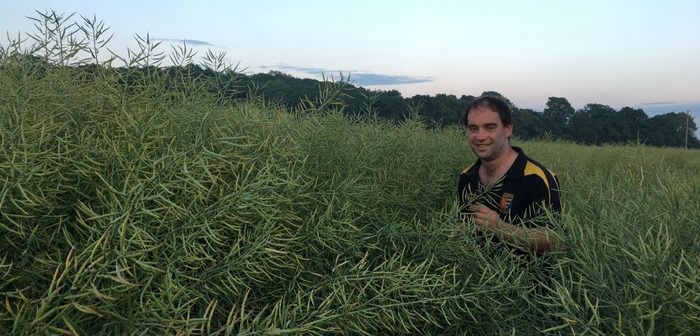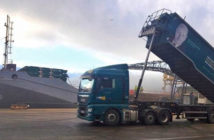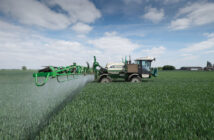Careful planning of rotations is fundamental to the success in arable production. Farmer Sam Steward, from Woodbridge in Suffolk, has proven that growing oilseed rape (OSR) in a wider rotation can be key to tackling the crop’s biggest challenges.
Mr Steward said: “We have grown oilseed rape in tighter rotations before, but that was before the neonicotinoid ban. We now always stick to a full six years between rape crops.
“Our hope is that by having a longer rotation and reducing the amount of rape grown in one area, that Cabbage Stem Flea Beetle (CSFB) infestations would reduce over the long term. That’s certainly what I think and go by anyway.”
In total Mr Steward farms 300 ha of owned and rented arable land, including 50 ha of oilseed rape, 200 ha of winter wheat, 20 ha of vining peas, 10 ha of field beans and 10 ha of sugar beet.
“We use OSR as the first crop in the rotation, then we have two crops of winter cereals, mainly winter wheat, then I’ll add in a break crop like vining peas or field beans, followed by two further crops of wheat, before returning to oilseed rape. That gives me the six-year gap that I want.”
Adopting a wider rotation has proven successful and meant Mr Steward has, to date, not lost much of his area of winter oilseed rape.
“It’s a funny crop; you don’t know what it will be like until harvest but, at the moment, it looks very healthy and well. We’ve not had much trouble at all. There are larvae in there but not enough to affect yields.”
Although Mr Steward has found more pressure in different fields, he has experienced little trouble growing oilseed rape in close proximity areas.
“You would think there would be more pressure, growing rape next to where it was grown the year before but one of the things we do try and do, is leave the volunteers on the old crop for as long as possible. Basically, we find that isolating the CSFB to where previous crops grew, followed by cultivation whilst allowing the new crop to establish in clean ground, really helps. However, it’s a case of trying different methods and figuring it out for yourself what works best in your situation.”
Mr Steward’s experimental approach extends to other practices, which are also proving beneficial for him.
“We still use what we call a low seed rate, about 3.5 to 4 kg/ha, aiming for big strong plants that can cope with higher CSFB infestations. We find that if we drill at a high seed rate, we establish more plants which means more stems for the larvae to spread across.”
He explained that drilling into moisture also works well: “I don’t think we should consider growing oilseed rape unless there is enough moisture in the ground, without it you lose the all-important early vigour. I drill whenever the conditions are right, so whether that’s the first or last week in August, we will hold off until there has been some rain. All of our oilseed rape is drilled using a sub soil drill.”
Additionally, he added: “we noticed that by rolling the headlands twice, we didn’t have as much slug or flee beetle trouble, and generally the rape all seemed to be better established. So now we aim to roll twice, at two different angles, trying to ensure we get good seed to soil contact, helping the oilseed rape to get away quicker.
“We only spray once for flea beetle and if it doesn’t work first time, what is the value in spraying again? We try to spray at night as the beetle seem more active then.”
With this year’s crop podding well, and averaging close to two metres tall, Mr Steward says that adopting a wider rotation is working and will be a core part of his oilseed rape growing strategy in the future.
“I think we are quite lucky where we are as we don’t have major issues with flea beetle, compared to say the Midlands. For the moment we will keep growing rape while we can because there aren’t many other options for profitable break crops.”




